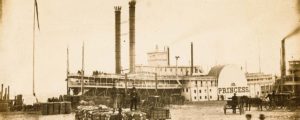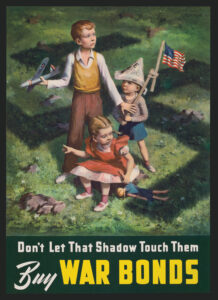Slavery Still Haunts Legislatures, Universities, Politicians—and Descendants
Slavery, that “peculiar institution” of old, continues to make headlines in 2007. As lawmakers in a number of statehouses introduced largely symbolic resolutions of apology, opponents are asking whether current generations could, or should, apologize for the actions of their ancestors. The question typically came down to semantics as legislators parsed each word and deliberated the connotations of terms like “regret” and “contrition.”
The first official state apology came from the former capital of the Confederacy itself. In Richmond, the Virginia House of Delegates approved a unanimous resolution in February expressing “profound regret” for slavery. Maryland passed a similar resolution in March, followed by North Carolina in April. At press time, the debate continued in Georgia, Missouri and Texas. In the U.S. Congress, Tennessee Democrat Steve Cohen has introduced a resolution in the House of Representatives apologizing for slavery, and Sam Brownback (R-Kan.) introduced a Senate resolution apologizing for actions against American Indians.
Meanwhile, a recent report revealed slave labor played a significant role in the early development of Rhode Island’s Brown University, founded in 1764. In response to the findings, the university pledged to raise $10 million for local public schools and to consider forming an academic center to study slavery and justice.
In February, Ancestry.com reported that civil rights leader and politician Al Sharpton is the descendant of a slave owned by an ancestor of the late U.S. Senator Strom Thurmond. A distant cousin of the senator, Julia Thurmond, owned Coleman Sharpton, the great-grandfather of Al Sharpton. Shortly after Strom Thurmond’s death in 2003, it was revealed that the former segregationist had fathered a biracial daughter.
In yet another twist, genealogists discovered that ancestors of U.S. senator and presidential hopeful Barack Obama (D-Ill.) owned slaves. Researchers traced the family tree of Obama’s mother, who is white, and found that two direct ancestors owned slaves in Nelson County, Ky., in 1850. The issue took on added meaning when juxtaposed with headlines that challenged Obama’s racial heritage: “Is Obama Black Enough?” in Time magazine and “What Obama Isn’t: Black Like Me,” a column by Stanley Crouch in the New York Daily News. Somewhat overshadowed by the news about Obama, genealogists also found that candidates John McCain (RAriz.) and former North Carolina senator John Edwards had slave-owning ancestors.
Finally, in March, more than 76 percent of Cherokee voters in a tribal referendum agreed to remove the descendants of Cherokee-owned slaves from tribal rolls. The move would expel about 2,800 descendants of former slaves who currently receive health care and other benefits as members of the Cherokee Nation. The Cherokee had previously expelled slave descendants in 1983; however, a tribal court overruled the decision in 2006. Former slaves were originally granted tribal membership in 1866.
Tuskegee Airmen Honored
In March President George W. Bush presented the surviving Tuskegee Airmen with the Congressional Gold Medal, the highest civilian honor awarded by Congress. During World War II, the U.S. Army trained approximately 1,000 African-American pilots in Tuskegee, Ala. As the 332nd Fighter Group, the Tuskegee Airmen collectively flew some 1,570 missions and destroyed more than 260 enemy planes in the air and on the ground. In part, their outstanding service prompted President Harry Truman to integrate the military in 1948. Fewer than one-third of the airmen are still living.
Emmett Till Case Closed
The U.S. Department of Justice in March officially closed the case of one of the most notorious murders of the civil rights era. The department brought charges against Carolyn Bryant Donham in 2004 for her alleged role in the 1955 murder of Emmett Till, a black teenager. This spring a grand jury in Leflore County, Miss., failed to hand down an indictment. The 14-year-old Till, visiting from Chicago, was brutally killed after whistling at Carolyn Bryant—a white woman— in Money, Miss. Till’s grandfather testified at the time that he had heard Bryant’s voice inside the car driven by the men who abducted his grandson. The same day the Till decision was announced, the Justice Department revealed that it was reexamining nearly 100 other civil rights cold cases.
Lone Ranger, FDR Join National Registry
The Library of Congress has named its 2007 selections to the National Recording Registry. Since 2000, the registry has compiled significant historic recordings for preservation purposes. This year’s choices include a 1904 recording by humorist Cal Stewart, a 1924 National Defense Test, the Carter Family’s “Wildwood Flower” recorded in 1928, a 1937 radio episode of The Lone Ranger, Franklin Roosevelt’s address to the nation the day after Pearl Harbor in 1941, Arthur Rubinstein’s 1952 performance of Chopin’s “Polonaise militaire,” Carl Perkins’ 1955 rendition of “Blue Suede Shoes,” Allen Ginsberg’s “Howl” recorded in 1959, Bob Newhart’s 1960 album The Button-Down Mind of Bob Newhart, The Rolling Stones’ “(I Can’t Get No) Satisfaction” of 1965 and Paul Simon’s 1986 Graceland.
Forensics Prove Big Bopper Not the Victim of Foul Play
The plane crash that killed rockers Buddy Holly, Ritchie Valens and J.P. “Big Bopper” Richardson on Feb. 3, 1959, also spawned rumors of murder. The rumor was so persistent that the Bopper’s son Jay Richardson, who performs as the Big Bopper Jr., had his father’s body exhumed in April. Holly’s pistol was discovered near the crash site, leading to speculation that gunplay accidentally brought down the plane and that the Big Bopper had survived the initial impact. A forensic anthropologist examined the remains, finding no evidence of foul play and that the Big Bopper died instantly on impact.
Rare Declaration of Independence Found in Thrift Store
You hear stories like this all the time: Someone walks into an antique store and buys an original copy of the Declaration of Independence for a few dollars. Those copies, however, are more likely to date to 1976 than to 1776. Once in a while, though, someone hits the jackpot. Last year music equipment technician Michael Sparks bought a copy of the document dated 1823 for $2.48 in a thrift shop in Nashville, Tenn. It turns out that Sparks had acquired one of 200 official copies of the declaration commissioned by Secretary of State John Quincy Adams in 1820 and printed in 1823. In March Sparks auctioned the document for $477,650.
Butte Battles to Get Its Civil War Cannon Back
Norman DeNeal has launched a campaign to bring a Civil War cannon that had been on display in Butte, Mont., for nearly 60 years back to the city. In 1903 copper tycoon and U.S. Senator William A. Clark arranged to have a cannon donated to the Lincoln Post No. 2, a Butte veterans group. The veterans placed the cannon in the Columbia Gardens amusement park, which happened to be owned by Clark.
In 1960 the Anaconda Copper Mining Company—which had owned the park site since 1925— donated the cannon to the U.S. military’s artillery museum in Fort Sill, Okla. DeNeal claims the Anaconda Company never owned the cannon and didn’t have the right to give it away. The U.S. Army, however, contends the cannon has always been government property and was not deeded legally to the Civil War veterans group in 1903.
Developers Threaten Historic Community
In 1984 more than 530 buildings in a historic 40-block area in Houston known as Freedmen’s Town were listed on the National Register of Historic Places. One of the largest remaining communities built by freed slaves after the Civil War, Freedmen’s Town was noted for its historic significance and distinct architecture. But frame houses and churches have given way to urban sprawl. According to the Yates Community Archaeological Program, a project sponsored by the Rutherford B.H. Yates Museum in Freedmen’s Town, fewer than 30 of the historic structures still stand. YCAP is working with local residents to preserve the history of this community and to further our understanding of the experiences of freed slaves and the broader issues of race and class in America.
DNA Tests Indicate Middle East Link for Thomas Jefferson
England’s University of Leicester recently released an intriguing study that suggests Thomas Jefferson may have had Jewish ancestors. Researchers identified Jefferson’s Y-chromosome to be part of the K2 line, which is believed to be about 20,000 years old. While the K2 line is most often found in the Middle East, it also exists in Western Europe. The most common rationalization for this is the Diaspora, in which Jews were forced out of the Middle East and settled throughout Europe. Researchers caution that more information is needed to prove their thesis. In a previous genetic study, Leicester researchers confirmed that Jefferson had fathered a child with his slave Sally Hemmings.
New Film of JFK
Incredibly, 44 years after one of history’s most scrutinized events, never before seen film footage has emerged of John F. Kennedy 90 seconds before his assassination in Dallas. The 8mm film, shot by George Jefferies, shows close-up views of the president and first lady waving to the crowds. Secret Service agent Clint Hill can be seen riding on the presidential limo’s rear bumper. Jefferies and his son-in-law donated the film to the Sixth Floor Museum located in the former Texas School Book Depository.
George Washington’s Tent Restored
Textile conservator Loreen Finkelstein, with the aide of the FBI, has discovered a long-missing circular piece from a tent used by George Washington during the Revolutionary War. The tent, which had been on display in Valley Forge, Pa., for nearly 100 years, has an approximate two-foot-square hole in it— likely created by a souvenir seeker. Finkelstein was working on projects for Valley Forge and Mount Vernon. When she mentioned the hole in the tent, a Mount Vernon curator told her the mansion owned several Washington tent fragments. Finkelstein worked with an FBI agent to conclusively match the shape, weave and color of one of the Mount Vernon fragments with the Valley Forge tent. The American Revolution Center at Valley Forge plans to reattach the fragment to the recently conserved tent.
Politics and Music in Party Archive
The Communist Party USA has donated its historic documents to New York University. In addition to official founding documents, the collection includes photos, directives from Moscow and strict guidelines of obedience. Folk music fans will be fascinated by two items: Pete Seeger’s original handwritten lyrics to “Turn, Turn, Turn” and the handwritten will of labor leader Joe Hill, which later was set to music and became a staple of nearly every protest movement of the 20th century.
Reprieve for Confederate Museum
The Commonwealth of Virginia has approved $400,000 in operating expenses for the Museum of the Confederacy in Richmond. The funding will sustain the site through 2007-08. The museum was in danger of shutting its doors because of financial problems. The annual cost to maintain and display the large collection of Confederate artifacts is estimated to be $2.1 million.
Originally published in the August 2007 issue of American History. To subscribe, click here.




